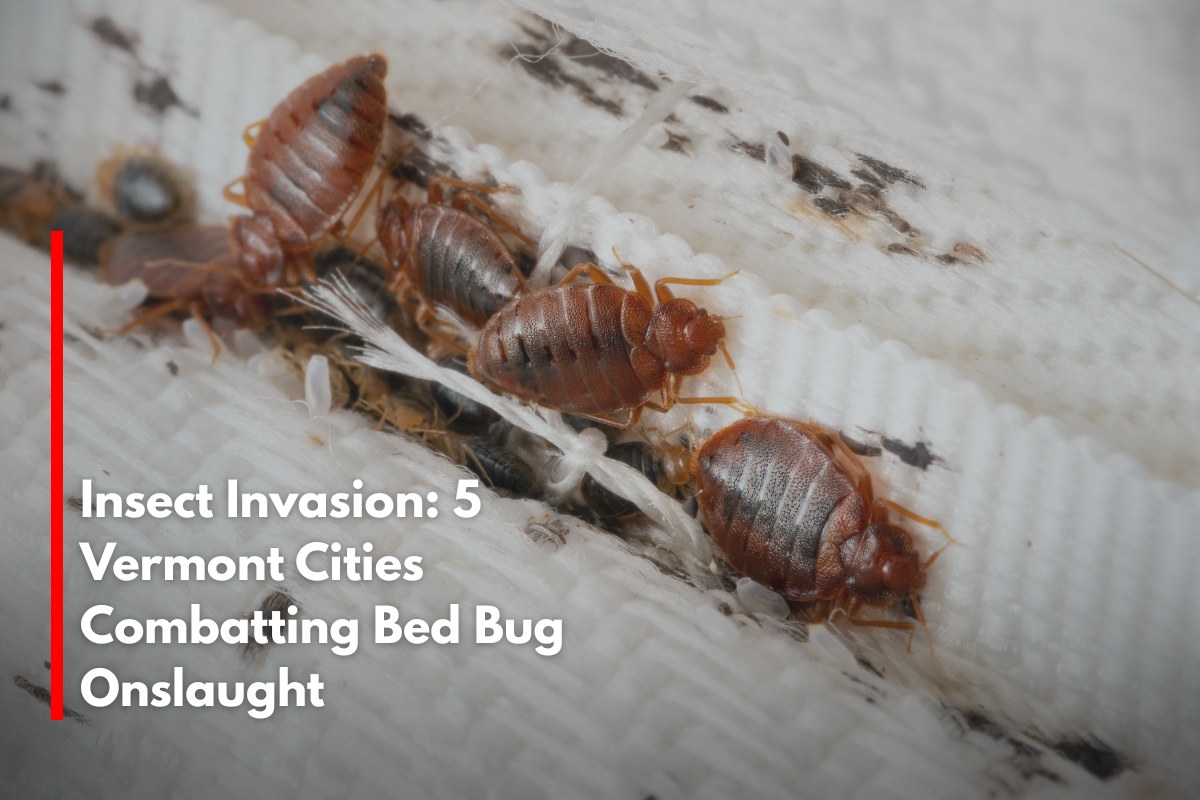Bed bugs have become a growing concern in Vermont in recent years, with increasing reports of infestations across multiple cities. Known for thriving in homes, hotels, rental units, and public spaces, these small, reddish-brown insects feed on human blood and are notoriously difficult to eradicate. The resurgence in bed bug populations is attributed to factors such as high travel volumes, secondhand furniture, and reduced pesticide use.
Cities Most Affected by Bed Bugs in Vermont
1. Burlington
Burlington, Vermont’s largest city, has seen a notable increase in bed bug cases, especially in multiunit housing and low-income neighborhoods. City officials have been working to raise awareness, and a “bed bug summit” was convened in 2025 to bring together tenants, landlords, and health officials to combat infestations collaboratively.
2. Rutland
Rutland has also faced bed bug challenges, where residents report persistent infestation issues in homes and apartments. Some residents have had to endure prolonged treatment processes, with state intervention in pest control sometimes viewed as inadequate. The issue has caused significant distress and disrupted daily life for many households.
3. Montpelier
In Montpelier, Vermont’s capital, bed bugs have appeared sporadically but with growing frequency. Public health officials emphasize early detection and regular inspections in rental properties to control the spread and reduce public health impacts.
4. Barre
Barre has reported localized outbreaks and continues efforts to educate landlords and tenants about preventive measures, including regular cleaning, bed bug-proof mattress covers, and professional pest control services. Community cooperation is seen as key to successful management.
5. South Burlington
South Burlington faces bed bug challenges similar to its larger neighbor, Burlington. Efforts have focused on pest control best practices, tenant rights, and responsibilities, as well as encouraging reporting and early intervention to avoid widespread infestation.
Vermont’s Strategies for Bed Bug Control
Integrated Pest Management (IPM)
Vermont encourages the use of Integrated Pest Management (IPM), a comprehensive approach combining chemical and non-chemical methods tailored to infestations. IPM includes thorough inspections, vacuuming, steam cleaning, mattress encasements, and sealing cracks and crevices where bed bugs hide.
Education and Community Engagement
Public education campaigns target landlords, tenants, and the hospitality industry, stressing early reporting and professional extermination. Pilot programs involve bed bug-sniffing dogs, which assist in precise detection, reducing reliance on pesticides and improving success rates.
Regulatory and Support Resources
The Vermont Department of Health provides guidelines, resources, and regulatory oversight to help communities manage bed bug outbreaks. Collaboration with local pest control companies ensures that treatments meet safety and effectiveness standards.
The resurgence of bed bugs in Vermont cities such as Burlington, Rutland, Montpelier, Barre, and South Burlington highlights the need for proactive pest control, public awareness, and coordinated community responses. Using integrated management and fostering cooperation among landlords, tenants, and public health entities is essential to overcoming this persistent insect invasion and protecting Vermont residents’ well-being.
Sources
(https://news.vt.edu/articles/2025/04/bed-bug-gene-mutation-insecticide-resistance-warren-booth-flsi.html)
(https://www.sevendaysvt.com/news/vermonts-got-a-growing-bedbug-problem-and-yes-they-bite-2141162)
(https://www.vermontpublic.org/vpr-news/2014-01-16/bedbugs-turn-rutland-couples-life-upside-down)
(https://vtlawhelp.org/bedbugs)
(https://www.healthvermont.gov/sites/default/files/documents/pdf/ENV_HH_BedBugs_hospitality.pdf)











